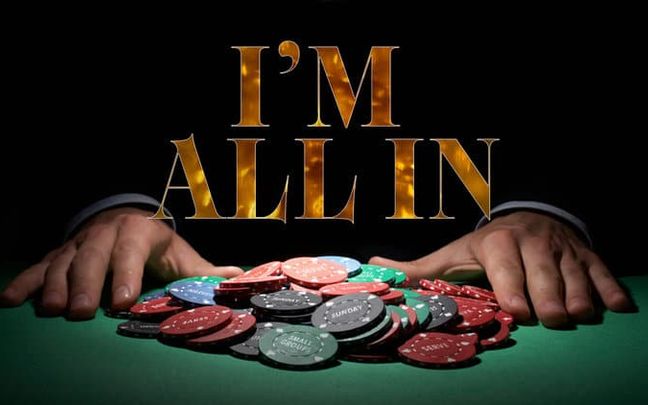Many players often wonder, What is a Backdoor? This is an important term in poker, referring to completing a strong hand through cards that appear in later rounds, even if you initially don’t have a strong hand. This article will help you understand what a Backdoor is, how to incorporate it into your poker strategy, and specific situations where it can be used effectively.

What is a Backdoor?
Many poker beginners often ask, "What is a Backdoor?" Simply put, a backdoor in poker refers to completing a strong hand not right from the start but through cards that appear in subsequent rounds, typically via a draw (a chance to improve your hand).
To explain the concept of "What is a Backdoor?" in another way, it describes a situation where you don’t immediately have a strong hand, but you can improve it into a strong combination (such as a straight or flush) through the cards revealed in the later rounds (turn and river).
To make it clearer, imagine you hold a pair of cards like 7♠8♠, and on the flop, you get only part of the combination you need, such as one card of the same suit or a connecting card, but not enough to complete a flush or straight. However, you still have the potential to improve your hand in the later rounds if you get the right cards on the turn and river. This is the essence of what a backdoor is — completing a strong hand through cards that come later in the game.

Specific Example of a Backdoor
To better illustrate the concept of "What is a Backdoor?", let’s look at a specific example.
Suppose you hold 7♠8♠, and the flop comes 2♠3♠Q♦. At this point, you don’t have a strong hand, but you do have a backdoor flush draw (a chance to form a flush) because you have two cards of the same suit. If a 5♠ or 6♠ appears on the turn or river, you could complete a straight or a flush, depending on the card you receive.
In this scenario, while you don’t have a strong hand initially, the possibility of completing a powerful hand remains if the right cards appear in the later rounds. This perfectly illustrates a backdoor situation.

Types of Backdoors and the Benefits of Using Them in Poker
After understanding the definition of “What is a Backdoor?”, let’s explore the different types of backdoors and their advantages.
Common Types of Backdoors in Poker
In poker, backdoors can vary depending on the kind of hand you are aiming to build. Below are some of the most common backdoors encountered during play:
Backdoor Flush
A backdoor flush occurs when you hold suited cards and have the potential to complete a flush in subsequent rounds. For example, if you hold 6♠7♠ and the flop is 2♠10♠J♦, you still have a chance to complete a flush if a ♠ appears on the turn or river.
Backdoor Straight
A backdoor straight happens when you can complete a straight through the next cards dealt. For instance, if you have 9♠10♠ and the flop shows 2♣5♦Q♥, you can still make a straight if a J♠ appears on the turn and a K♠ on the river.
Even though the flop doesn’t initially give you a strong hand, you can win the pot by improving your hand on later streets.
Backdoor Full House or Four of a Kind
In rare cases, you might improve your hand into a full house or even four of a kind through subsequent cards, although the probability is much lower. For example, if you hold a high pocket pair and one of your cards matches on the flop, you could still make a full house if another matching card appears on the turn or river.
Benefits of Backdoors in Poker
Below are the three main benefits of understanding “What is a Backdoor?” and applying it effectively:
1. Creating Winning Opportunities
One of the biggest advantages of backdoors is the potential to create winning chances in seemingly hopeless situations. If you only rely on your hand on the flop, you might fold prematurely, thinking you have no chance of winning. However, backdoors can salvage these scenarios.
As discussed, a backdoor flush or straight can turn the game around with just one crucial card on the turn or river.
2. Strategic Attacks on Opponents
Backdoors can also serve as a strategic weapon to pressure opponents. If you hold a backdoor draw, you can choose to bet or raise to apply pressure, especially if your opponent plays passively or lacks confidence in their hand.
When your opponent folds or becomes hesitant, you can win the pot without needing to complete your backdoor draw.
3. Controlling the Pot and Managing Risks
Backdoors also help you control pot size and manage risks more effectively. You don’t need to make large bets initially if you only have a backdoor opportunity. Instead, you can place smaller bets to maintain flexibility in your strategy.
If you hit the card that completes your hand, you can increase your bets to maximize the situation. If not, you can fold without significant losses.

In summary, backdoor is a powerful and versatile strategy in poker that allows you to win even when your initial hand is weak. With backdoor flush draws, backdoor straight draws, or other types of draws, you can create opportunities to win the pot and effectively control the game.
However, to use backdoors effectively, you need to calculate carefully, assess the situation and your opponents, and make timely decisions on when to bet and when to fold.
Only when you truly understand what a backdoor is and apply it intelligently and strategically can you maximize your chances of success in poker.























